1550 Cobb Industrial Dr. | P.O. Box 9098 | Marietta, GA 30065-2098
770-425-1355 (Phone) | 770-425-1354 (Fax) | info@alliedcorrosion.com (Email)
©2018 Allied Corrosion. All rights Reserved.
Made with ❤ by Mighty Good Marketing
Selected:

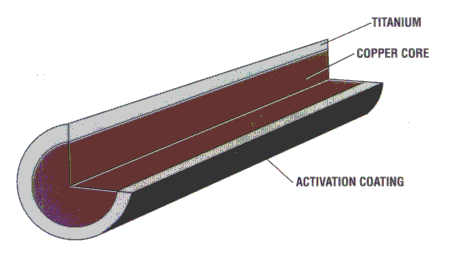
LIDA® wire anodes are comprised of a titanium substrate with a mixed metal oxide coating. The mixed metal oxide is a crystalline, electrically-conductive coating that activates the titanium and enables it to function as an anode. are titanium wire with a mixed metal oxide coating. The mixed metal oxide is a crystalline, electricallyconductive coating that activates the titanium and enables it to function as an anode. LIDA® wire anodes are manufactured in two diameters, 1.5 millimeter and 3.0 millimeter.
When applied on titanium the coating has an extremely low consumption rate measured in terms of milligrams per year. As a result of this low consumption rate, the wire diameter remains nearly constant during the life of the anode.
The low consumption rate of the mixed metal oxide coating at the recommended operating current densities result in projected anode lifetimes from 15 to 20 years. Longer or shorter lifetimes may be obtained by varying the current output per foot per wire.
Anode Coating – The coating used on wire is suitable for most cathodic protection applications, but output varies with application. LIDA® mixed metal oxide coating demonstrates a very high chemical stability, even in environments with very low pH values. Unlike other impressed current anodes, the LIDA® coating is not affected by the generation of chlorine. Lead Wire Connection – A typical connection between the LIDA® wire anode and a header cable, have been used successfully in canistered anodes since 1987.
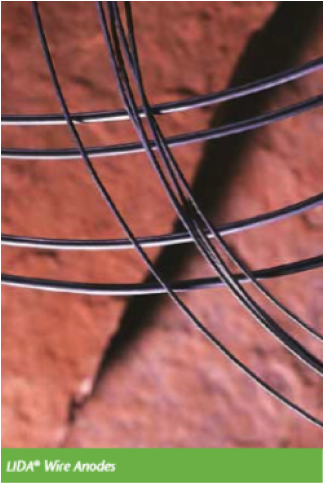
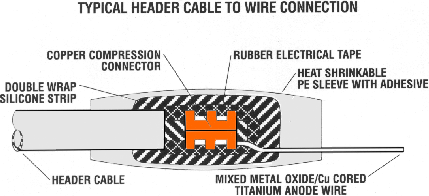
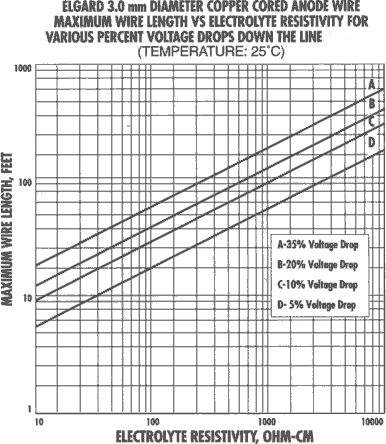
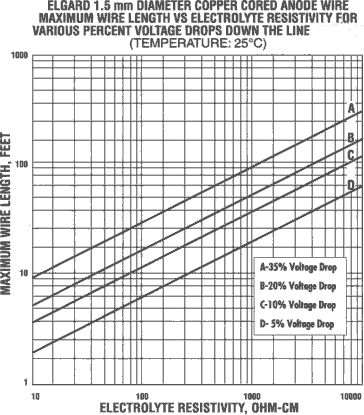
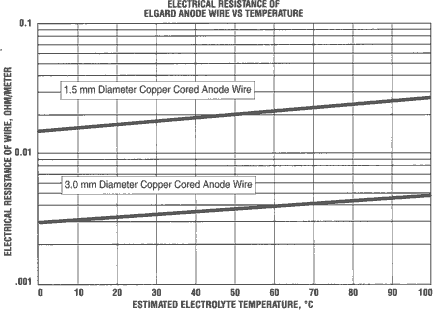

Proper current distribution is an important factor in the design and proper use of an anode wire for each application. For example, if a wire voltage drop of 10% or less is desired for proper current distribution in 1000 ohm-cm water, anode segments of 45 feet should not be exceeded between electrical connections to a header cable with the 1.5 mm diameter wire.
By comparison, use of the 3.0 mm diameter wire will permit the use of 110-foot segments, while still allowing the desired 10% voltage drop. As with all electrical conductors, the operating temperature of thewire effects the resistance. The table below, shows this effect by assuming the wire will operate at the temperature of the surrounding electrolyte. The change in resistivity also changes the maximum ampacity of the wire.
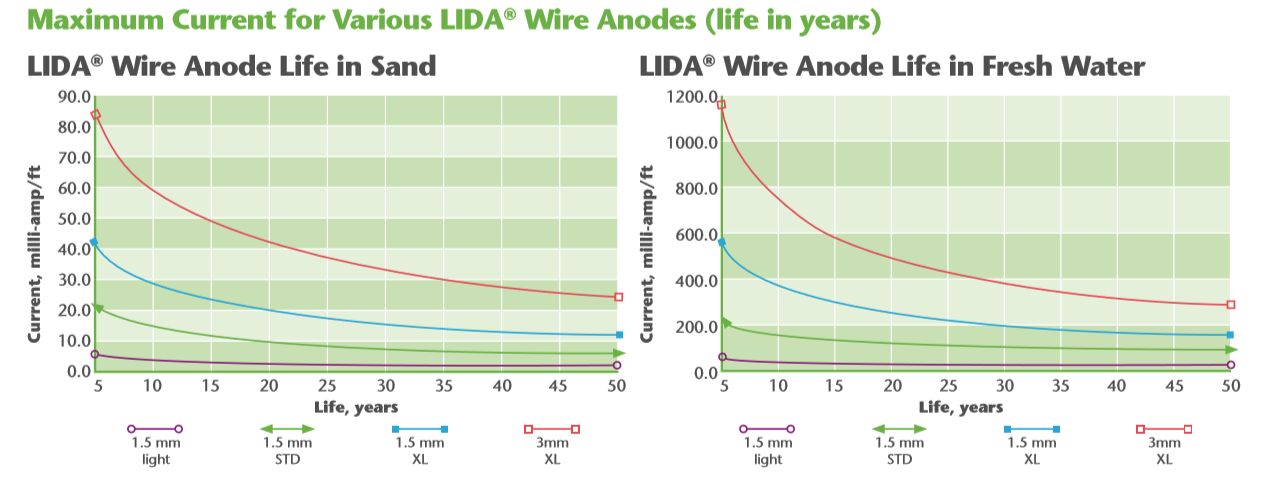
In many cases, LIDA® mixed metal oxide wire anodes offer savings over competitive anodes on an installed cost basis. This is possible by balancing the high current density capability of mixed metal oxide coatings and the ability to tailor to desired lifetimes.
LIDA® wire anodes can be used in a wide variety of cathodic protection applications. Their lightweight and malleability allow forming to complex configurations. The copper core provides high conductivity resulting in better current distribution along the entire length of the wire.
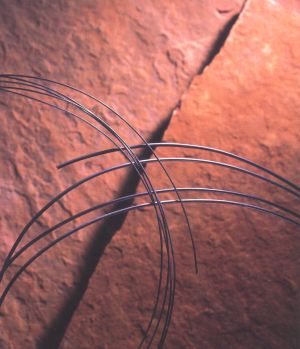
1550 Cobb Industrial Dr. | P.O. Box 9098 | Marietta, GA 30065-2098
770-425-1355 (Phone) | 770-425-1354 (Fax) | info@alliedcorrosion.com (Email)
Made with ❤ by Mighty Good Marketing
We care about your privacy! In order to run a successful website, we are setting cookies and accessing and storing information on your device for various purposes. By continuing to browse this site, you are agreeing to our use of cookies.
If you wish to disable cookies, please visit our Privacy Policy for more information.
Got It! Thanks!Privacy policy